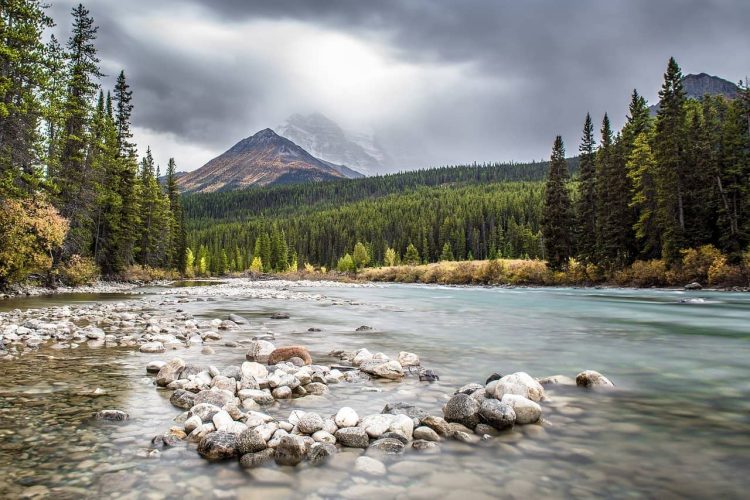Origins of River Gravel:

Rivers, the lifelines of the Earth, have been shaping landscapes for millennia. One of the hidden treasures they leave behind is river gravel — an unsung hero in the realm of natural aesthetics and practical applications. This unassuming collection of smooth, rounded stones has a story to tell, reflecting the intricate dance between water and rock over the eons. Let’s dive into the world of river gravel, exploring its origins, unique characteristics, and the diverse roles it plays in both nature and human endeavors.
Origins of River Gravel:
River gravel, also known as river rock or pebbles, is born from the relentless action of flowing water against the bedrock. As rivers meander through landscapes, they carry with them a motley assortment of stones, gradually wearing down rough edges to create the polished, rounded shapes we associate with river gravel. The process is slow but relentless, resulting in stones that are not only visually appealing but also distinctively smooth to the touch.
Characteristics of River Gravel:
The unique characteristics of river gravel make it a sought-after material for various purposes. One of its defining features is its diverse color palette, ranging from earthy browns and greys to vibrant reds and blues. This variety is a testament to the geological diversity of the regions through which the rivers flow, offering an array of options for landscaping and decorative applications.
In addition to their aesthetic appeal, river gravel stones are prized for their smooth texture. The constant tumbling in the river currents erodes rough surfaces, leaving behind stones that are pleasant to handle. This tactile quality enhances their use in landscaping projects, where they often serve as a ground cover or decorative element in gardens and outdoor spaces.
Ecological Significance:
Beyond their visual and tactile allure, river gravel plays a crucial role in maintaining ecological balance. The spaces between the stones create a porous substrate that allows water to percolate through, aiding in groundwater recharge. This permeability is vital for sustaining the health of riparian ecosystems and supporting the diverse flora and fauna that depend on these habitats.
Furthermore, river gravel serves as a natural filter, trapping sediments and pollutants from the water as it flows over and through the stones. This filtration process contributes to water quality improvement, benefiting both aquatic life and downstream ecosystems. In essence, river gravel acts as a silent guardian, preserving the delicate balance of our waterways.
Landscaping and Decorative Applications:
The aesthetic appeal and versatility of river gravel make it a popular choice in landscaping and decorative applications. Gardeners and landscape architects often use river gravel as ground cover, creating visually appealing pathways, driveways, and borders. The stones’ natural colors and smooth textures add a touch of elegance to outdoor spaces, creating a harmonious blend with the surrounding vegetation.
River gravel is also employed in the construction of water features, such as ponds and streams. The stones’ water-resistant nature and durability make them ideal for creating natural-looking aquatic environments. Additionally, their use in xeriscaping — a landscaping method that promotes water conservation — has gained popularity, as river gravel helps retain soil moisture and reduces the need for irrigation.
Construction and Infrastructure:
Beyond the realm of aesthetics, river gravel plays a vital role in the construction and infrastructure sectors. Its durability and load-bearing capacity make it an excellent material for various applications. In concrete production, river gravel serves as an essential aggregate, providing strength and stability to the final product. The rounded shapes of the stones also contribute to the workability of concrete mixtures.
In road construction, river gravel is used as a base material, providing a stable foundation for highways and other transportation infrastructure. The stones’ interlocking nature creates a robust and durable surface that can withstand the stresses of heavy traffic and adverse weather conditions. This application showcases the practical side of river gravel, where its innate qualities contribute to the longevity and resilience of built structures.
Cultural and Historical Significance:
The significance of river gravel extends beyond its practical applications, touching on cultural and historical aspects. Many ancient civilizations utilized river gravel in construction, creating enduring structures that stand as testaments to the material’s longevity. From the cobblestone streets of ancient Rome to the foundations of medieval castles, river gravel has left its mark on human history.
In some cultures, river gravel holds symbolic value. The smooth, rounded stones are associated with the passage of time and the cyclical nature of life. They are often used in traditional ceremonies or as components of artistic expressions that reflect a connection to the natural world.
Conclusion:
River gravel, with its timeless beauty and diverse applications, emerges as a silent but significant contributor to the intricate tapestry of our planet. From shaping landscapes to enhancing the aesthetics of our surroundings, river gravel stands as a testament to the dynamic interplay between water and rock. Whether as a ground cover in a garden, a crucial component in construction, or a symbol of cultural heritage, river gravel continues to weave its story through the fabric of our natural and built environments. As we appreciate its visual appeal and tactile qualities, let us also recognize the invaluable ecological services it provides, quietly fostering the health and resilience of our ecosystems.





